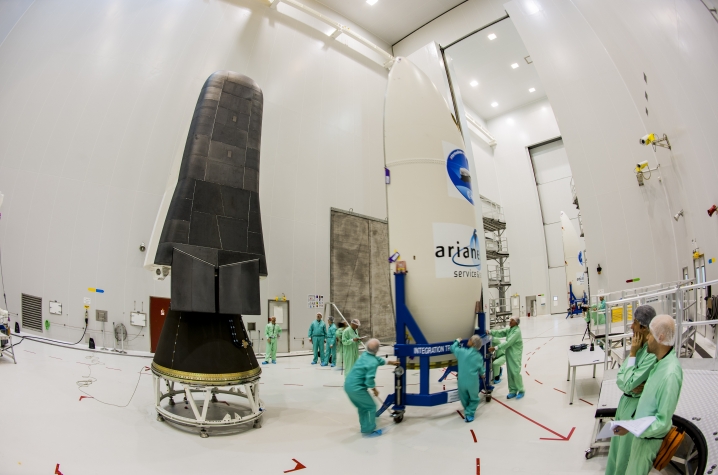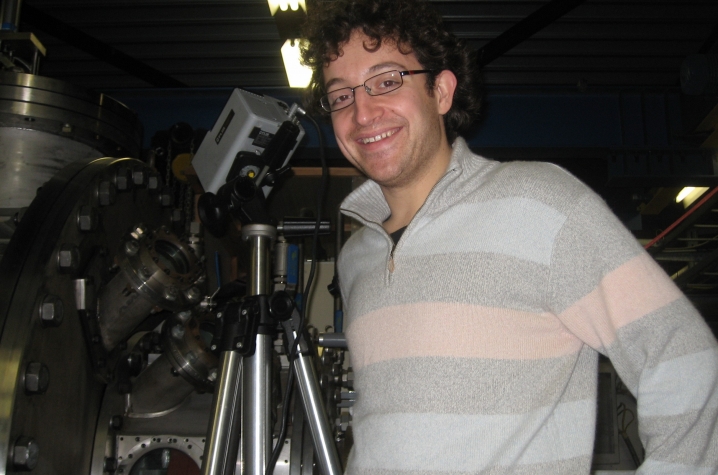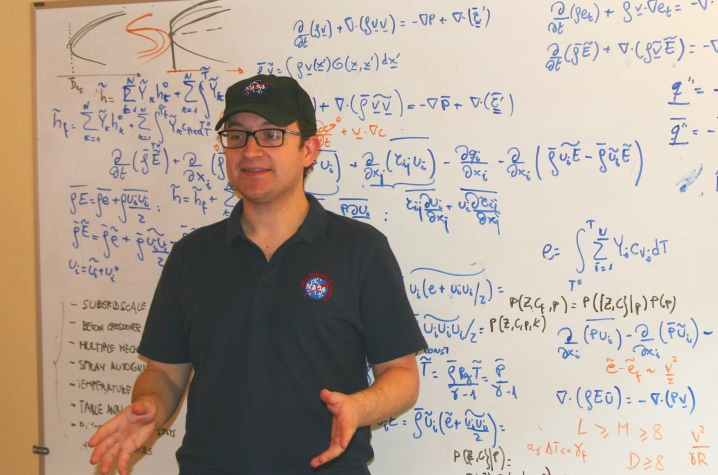UK Postdoctoral Scholar Contributes to Europe's Experimental Spaceplane
LEXINGTON, Ky. (Feb. 11, 2015) — Supported by seven countries, integrating efforts of 40 European companies, universities and research institutes, and harnessing the work of one University of Kentucky postdoctoral scholar, the European Space Agency's (ESA) Intermediate eXperimental Vehicle (IXV) blasted off this morning, Wednesday, Feb. 11. Francesco Panerai, postdoctoral scholar in the Department of Mechanical Engineering, was involved in the development of key features of IXV, which may pave the way for new spacecraft innovations.
Landing in the Pacific Ocean just west of the Galapagos Islands around 10:20 a.m. EST Wednesday, the unmanned IXV mission marks the first time Europe was able to fly a fully autonomous mission from launch to recovery, said Panerai, which only took approximately 100 minutes. But what is especially novel about the spaceplane is the reusable technology on board, materials that are meant to withstand the most severe environment, and could provide Europe with independent reentry capabilities.
"There is quite some excitement around this, as every space mission. It is a high risk/high reward project," said Panerai.
The Feb. 11 mission will provide critical data needed to understand how those new materials and instruments are performing.
Panerai, who is currently a visiting scientist at the NASA Ames Research Center, was involved in the mission while earning his doctoral degree at the von Karman Institute for Fluid Dynamics (VKI) in Belgium. Panerai, under the guidance of his doctoral degree advisor Olivier Chazot, contributed to the development of the aerothermal database of the spacecraft, and the experiment flying on board, CATE or the Catalysis Experiment.
Working on the aerothermal database, VKI executed ground experiments and simulations that could predict the behavior and environment of IXV during fight, aiding engineers in designing and sizing the various subsystems of the spacecraft.
Panerai was in charge of performing experiments at the VKI Plasmatron facility, the largest induction plasma wind tunnel worldwide. He was able to reproduce the same phenomena IXV will experience during high-speed reentry into the Earth's atmosphere, and test thermal protection materials, which will shield the spacecraft from high temperatures.
Specifically, Panerai said he and his team tested the ceramic tiles that are used to assemble the windward side of the vehicle, the material of the control flaps, and the ablative panels on the lateral and top sides of the craft. He was also involved in CATE, the in-flight catalysis experiment.
CATE consists of two patches with temperature sensors that were applied to IXV on its windward side. Panerai says the experiment will allow them to understand the chemistry happening at the surface of the vehicle, processes they currently know very little about.
"A similar experiment was flown by NASA on board of the Space Shuttle, but with more than 10 times the Shuttle instrumentation, CATE is going to be the "most instrumented" catalysis experiment that has ever been flown," said Panerai. The goal of the experiment: to understand gas/surface interactions in reentry environment and mitigate design limitations of heat shield materials, helping to build lighter and cheaper spacecrafts.
After reentry, IXV descended by parachute and landed in the Pacific Ocean, awaiting recovery and analysis, according to the ESA website. Approximately six weeks later, initial results should be released, and may have an impact on Panerai's present work.
As a UK postdoctoral scholar and NASA Ames Research Center visiting scientist, he is currently working with Alexandre Martin, assistant professor in the Department of Mechanical Engineering, on a NASA Early Stage Innovations research project. The goal of the project is to improve the design of heat shields, allowing a spacecraft to carry more usable payload to its destination.
MEDIA CONTACT: Whitney Harder, 859-323-2396, whitney.harder@uky.edu








